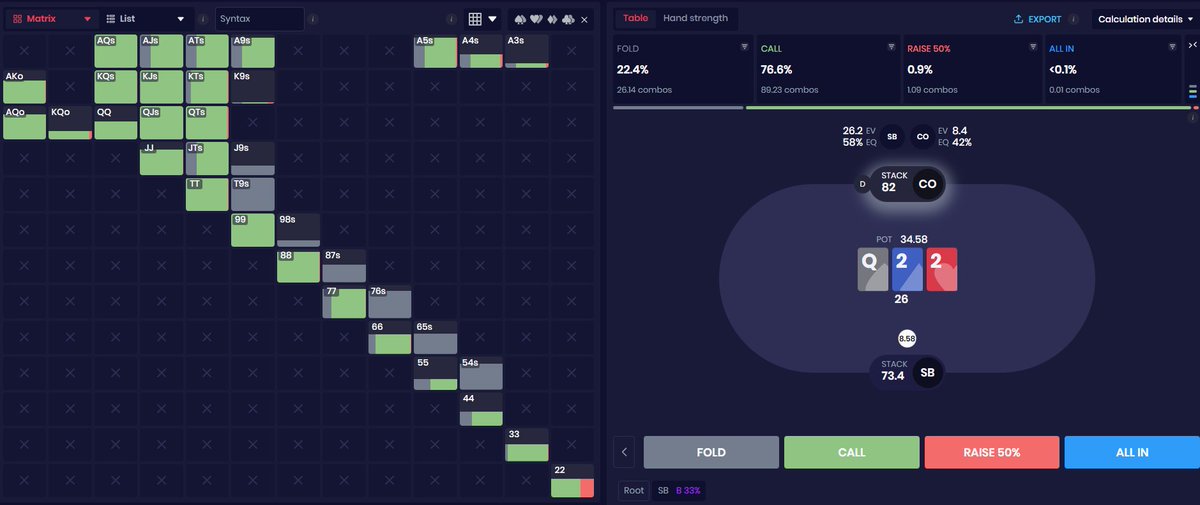With #WSOP coming around the corner, many players have begun selling and buying action for the upcoming events. Let’s breakdown some of the things you need to consider before purchasing action.
https://twitter.com/JoshuaArieh/status/1661440567266476052
1/ When you buy action you are essentially putting up a % of the buy-in in return for a % of the potential profits. Plain and simple, just like any other form of investing, but there are many things you need to consider.
2/ The player’s skill level: Many things you can look at to gauge someone’s skill or ability:
-Their track record
-Their recent performances
-Hands you’ve seen them play in the past
-Their track record
-Their recent performances
-Hands you’ve seen them play in the past
3/ This is problematic because the seller is incentivized to show how great they are to maximize the amount of markup people are willing to pay. This is ultimately a supply and demand game. Some players are more popular (especially streamers) and that can lead to higher markups
4/ Mark-up: This is a premium on the percentage of action sold. Many players will charge a mark-up to make a profit from selling their action.
5/ Example: Player charges 1.1 markup. This means that every 1% of action will cost a 1.1 multiple e.g. 1% of a $1k buyin at 1.1 market up will cost $1000x1.1x0.01 = $11
The higher the markup, the higher their ROI needs to be for you to break-even.
The higher the markup, the higher their ROI needs to be for you to break-even.
6/What’s a fair mark-up?
In theory it’s whatever the market is willing to pay.
Mathematically, if you believe someone’s ROI is higher than their % mark-up, then it will be a profitable investment. Players often try to price their mark-up at a minimum of 1/2 their expected ROI.
In theory it’s whatever the market is willing to pay.
Mathematically, if you believe someone’s ROI is higher than their % mark-up, then it will be a profitable investment. Players often try to price their mark-up at a minimum of 1/2 their expected ROI.
7/ Past results: Typically players will look at Hendonmob for live poker or sharkscope sharkscope.com results when trying to gauge someone’s ability. Online ROI is a good metric for gauging a fair markup. Be sure to look at ROI based on different buy-in ranges.
8/ A player’s reputation: When you buy action, you’re trusting that the player will pay-out when they cash. There are countless instances of players not paying out their pieces to investors. You want to be careful and avoid investing in people that may potentially scam you.
9/ The tournament:
Different tournaments have different structures and levels of competition. A high roller is much more difficult (and lower ROI) than a main event.
Format has a big impact on the ROI.
Hyper-turbo vs deep-stack slow structures.
Faster structure = lower ROI
Different tournaments have different structures and levels of competition. A high roller is much more difficult (and lower ROI) than a main event.
Format has a big impact on the ROI.
Hyper-turbo vs deep-stack slow structures.
Faster structure = lower ROI
10/ Taxes:
Be aware of the tax implications of buying action. This will depend on the country of yourself or the player you invest in. Sometimes the casino will withhold winnings for tax purposes and it can be an effort to file for a tax refund.
Be aware of the tax implications of buying action. This will depend on the country of yourself or the player you invest in. Sometimes the casino will withhold winnings for tax purposes and it can be an effort to file for a tax refund.
11/ Pay-out arrangements:
Make sure to discuss pay-out arrangements and understand how any winnings will be received. It’s best to have all the details in writing to prevent disputes over how much you’re owed and how long it will take to receive your payout.
Make sure to discuss pay-out arrangements and understand how any winnings will be received. It’s best to have all the details in writing to prevent disputes over how much you’re owed and how long it will take to receive your payout.
12/ Staying in communication:
It’s standard practice to ask for proof of any tournament entries or rebuys (photos of receipts etc.)
Many players will have some sort of rail chat or way of communicating updates on their events.
It’s standard practice to ask for proof of any tournament entries or rebuys (photos of receipts etc.)
Many players will have some sort of rail chat or way of communicating updates on their events.
Remember that buying action in poker is still a form of gambling. It’s crucial to only invest what you can afford to lose and to do your due diligence before investing in another player.
• • •
Missing some Tweet in this thread? You can try to
force a refresh

 Read on Twitter
Read on Twitter












